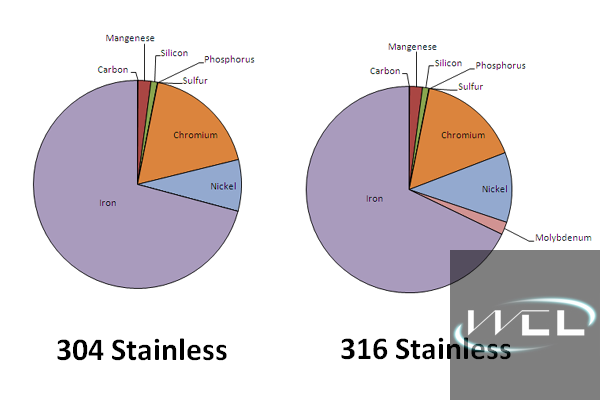

ASTM A276 Type 304 Stainless Steel Mechanical PropertiesĪnnealed, Cold finished, Dia ≤ 1/2 in (12.7mm)Īnnealed, Cold finished, Dia > 1/2 in (12.7mm)ĪSTM A240 Type 304 Steel Mechanical PropertiesĪSTM A313 Type 304 Stainless Steel Spring Wire Tensile Strength Requirements

☏)Įlastic modulus (Modulus of Elasticity), GPa (10 6 psi).Type 304 Stainless Steel Physical Properties SS 304 stainless steel physical properties are listed in the table below such as density, melting point, specific heat, electrical resistivity, elastic modulus (modulus of elasticity), thermal conductivity, and coefficient of thermal expansion (CTE). SAE J405: Chemical Composition of SAE Wrought Stainless Steels.ASTM A959: Standard Guide for Specifying Harmonized Standard Grade Compositions for Wrought Stainless Steels.ASTM 666: Annealed or Cold-Worked Austenitic Stainless Steel Sheet, Strip, Plate, and Flat Bar.

ASTM A479/A479M: Stainless Steel Bars and Shapes for Use in Boilers and Other Pressure Vessels.ASTM A314: Stainless Steel Billets and Bars for Forging.ASTM A313/A313M: Stainless Steel Spring Wire.ASTM A276/A276M: Stainless Steel Bars and Shapes.ASTM A240/A240M: Chromium and Chromium-Nickel Stainless Steel Plate, Sheet, and Strip for Pressure Vessels and for General Applications.Chemical CompositionĪISI 304 stainless steel chemical composition is listed in the following table. The following tables give SS 304 stainless steel properties and specifications (datasheet) including chemical composition, physical and mechanical properties, heat treatment, corrosion resistance, machinability and machining, welding, etc. Therefore, 316 SS is widely used in marine applications. The addition of molybdenum can enhance the resistance to pitting and crevice corrosion caused by chloride. The second most widely used 316 grade stainless steel, compared with AISI 304, reduced chromium content, increased nickel content, and added 2-3% molybdenum. There are several variants of 304 grade stainless steel, such as ultra-low-carbon version type 304L, nitrogen-containing version 304N, 304H with improved creep performance, and type 302 with higher carbon content. The high nickel-chromium alloy content gives it excellent corrosion resistance and is widely used in the food industry as a standard food grade stainless steel. Type 304 has good resistance to atmospheric corrosion and oxidation. SS 304 is non-magnetic under annealing conditions, but after cold working (such as stamping, stretching, bending, rolling), part of the austenite structure may be converted into martensite and therefore weakly magnetic. AISI 304 Stainless Steel (UNS S30400, SS 304)ĪISI 304 stainless steel (UNS S30400) is the most widely used stainless steel, containing 18-20% Cr and 8-10.5% Ni, and also known as 18-8 stainless steel.


 0 kommentar(er)
0 kommentar(er)
